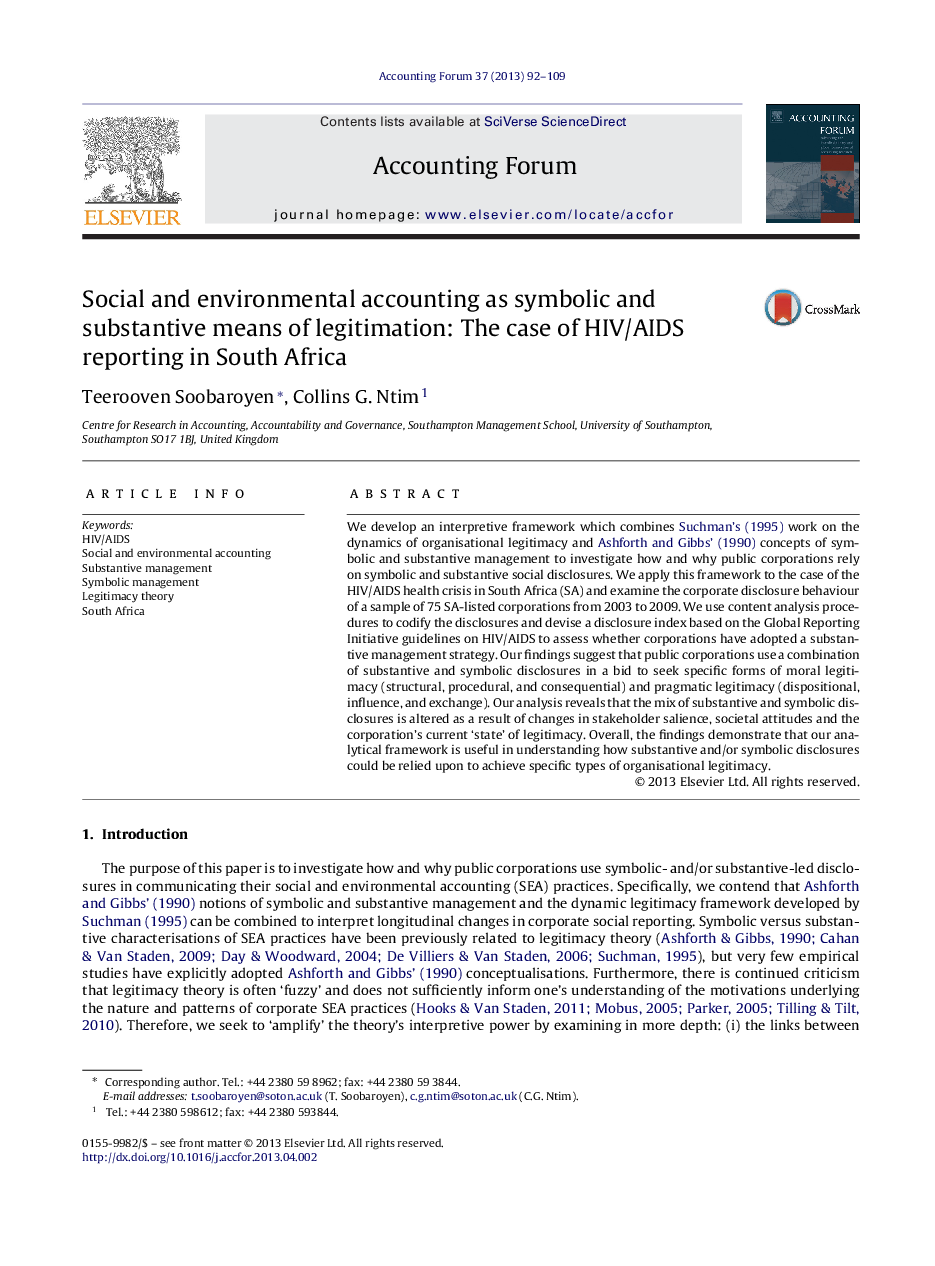| Article ID | Journal | Published Year | Pages | File Type |
|---|---|---|---|---|
| 1003801 | Accounting Forum | 2013 | 18 Pages |
We develop an interpretive framework which combines Suchman's (1995) work on the dynamics of organisational legitimacy and Ashforth and Gibbs’ (1990) concepts of symbolic and substantive management to investigate how and why public corporations rely on symbolic and substantive social disclosures. We apply this framework to the case of the HIV/AIDS health crisis in South Africa (SA) and examine the corporate disclosure behaviour of a sample of 75 SA-listed corporations from 2003 to 2009. We use content analysis procedures to codify the disclosures and devise a disclosure index based on the Global Reporting Initiative guidelines on HIV/AIDS to assess whether corporations have adopted a substantive management strategy. Our findings suggest that public corporations use a combination of substantive and symbolic disclosures in a bid to seek specific forms of moral legitimacy (structural, procedural, and consequential) and pragmatic legitimacy (dispositional, influence, and exchange). Our analysis reveals that the mix of substantive and symbolic disclosures is altered as a result of changes in stakeholder salience, societal attitudes and the corporation's current ‘state’ of legitimacy. Overall, the findings demonstrate that our analytical framework is useful in understanding how substantive and/or symbolic disclosures could be relied upon to achieve specific types of organisational legitimacy.
